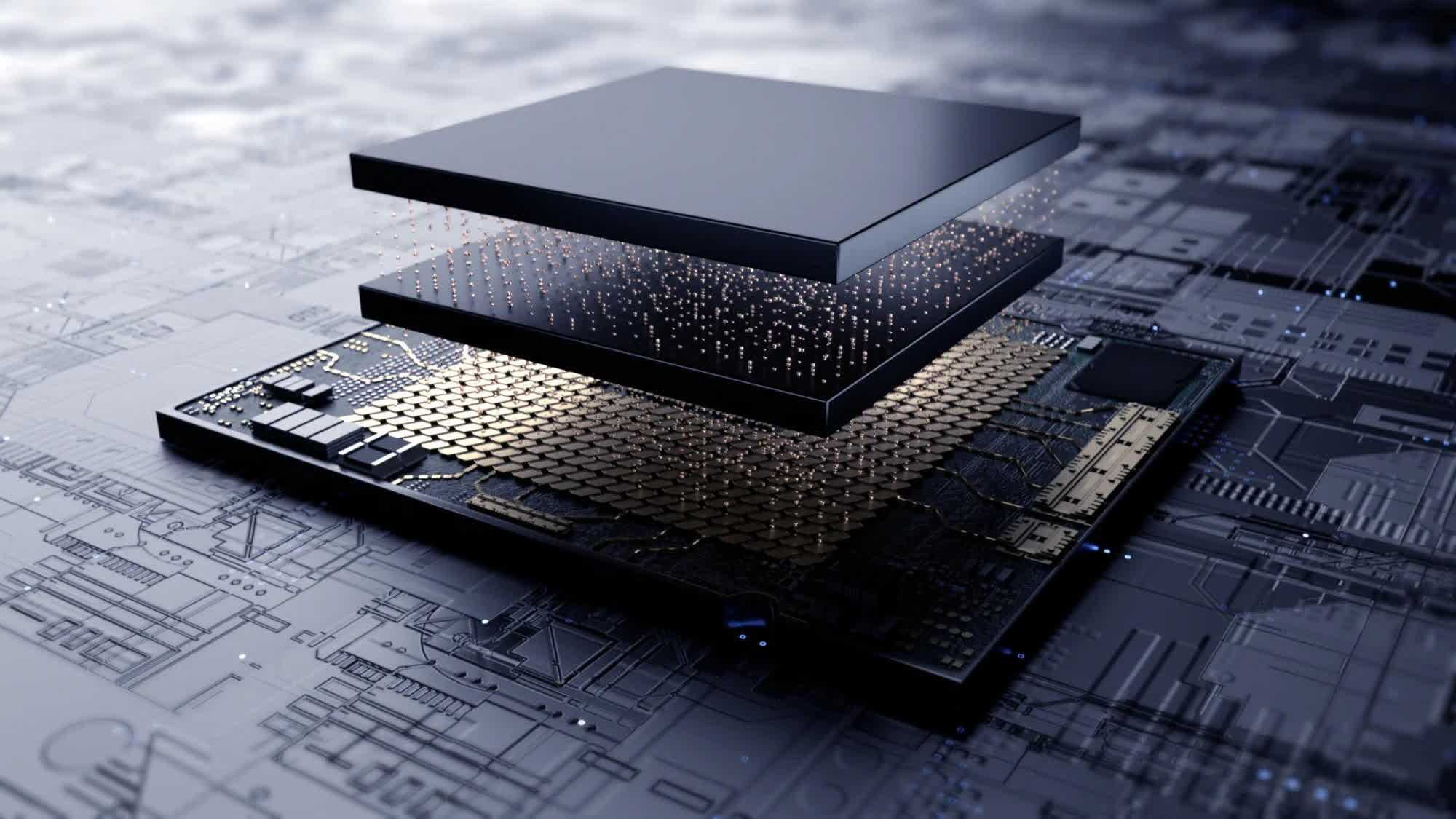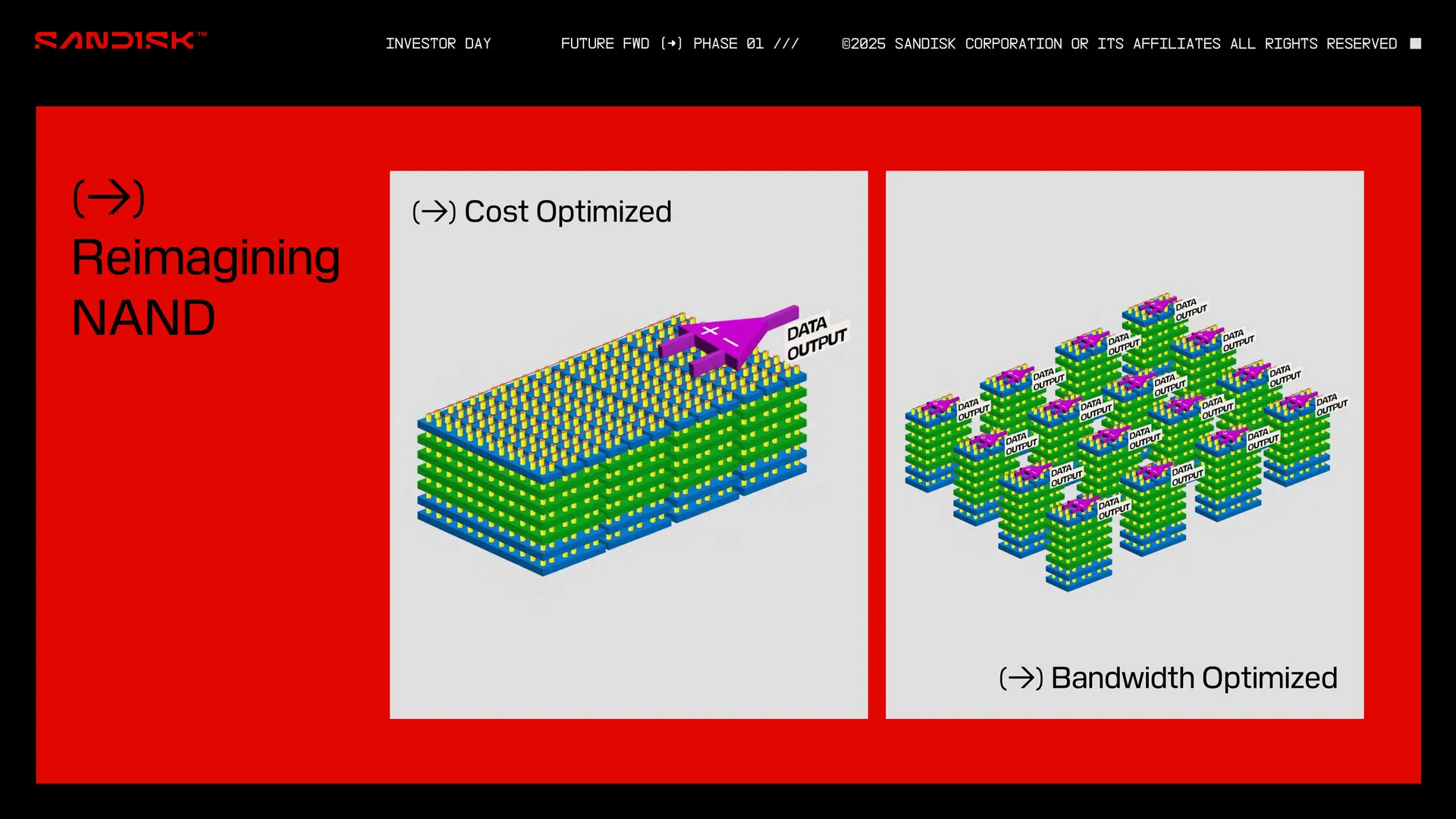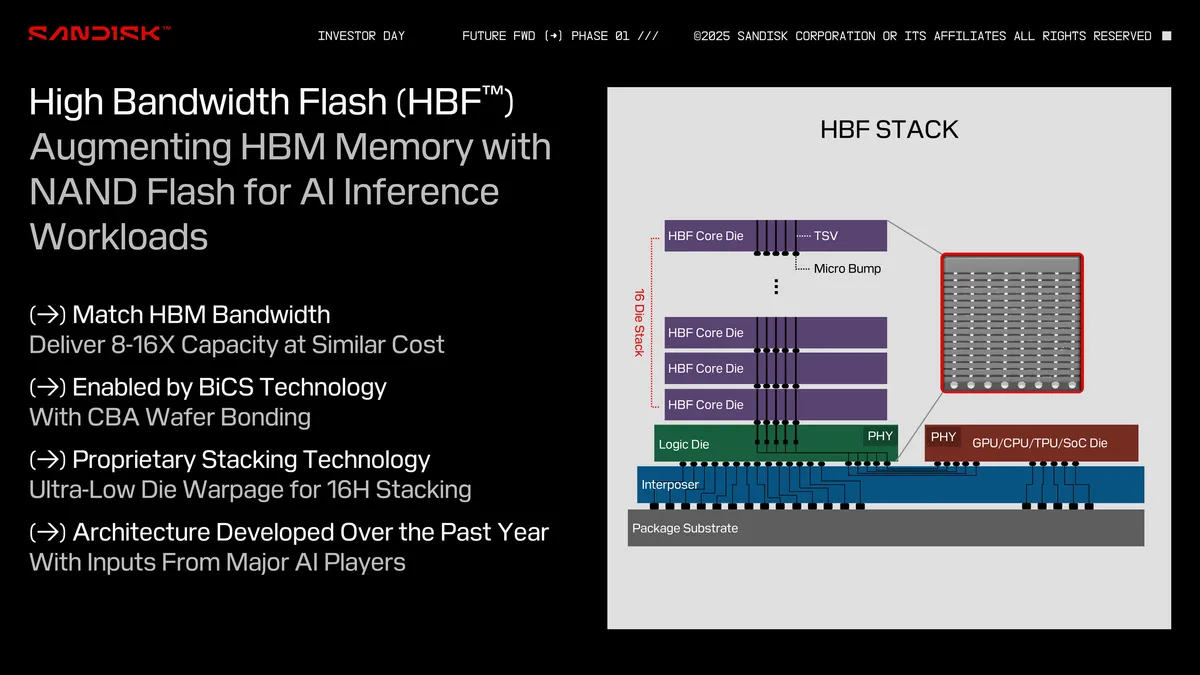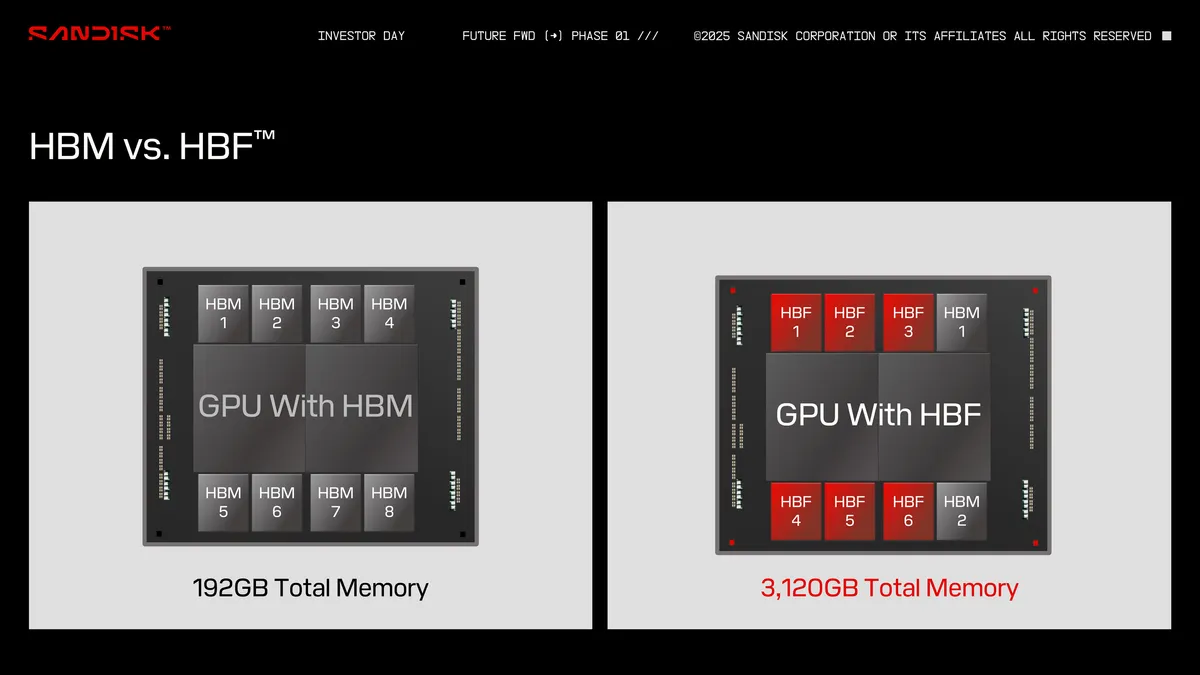Forward-looking: SanDisk introduced its High Bandwidth Flash solution earlier this year, vowing to bring unprecedented capabilities to the NAND Flash market. Now, the US corporation is working with South Korean foundry SK Hynix to try to turn the HBF dream into reality.
SanDisk recently announced a partnership with SK Hynix focused on High Bandwidth Flash (HBF), a new technology designed to significantly accelerate the NAND Flash market in terms of storage volumes. The two memory makers will work on a common specification for HBF products, defining the technology requirements and trying to jumpstart an HBF ecosystem.
The HBF tech was specifically designed to address the need for scalable memory coming from the AI industry, SanDisk Executive Vice President and Chief Technology Officer Alper Ilkbahar said in the company's press release. Working with SK Hynix – one of the world's largest semiconductor vendors with actual chip manufacturing capabilities – should accelerate the adoption of the new memory technology.
As SanDisk explained a few months ago, HBF employs a hybrid design which blends the storage capacities of 3D NAND chips and the high-bandwidth data rates provided by High-Bandwidth Memory (HBM) products. By vertically stacking eight HBF layers together, a single HBF chip could provide a whopping 4 terabytes of memory capacity.
In theory, HBF chips could be employed to store large language models such as GPT-4 directly in a GPU's VRAM. No need for access to SSDs or other local mass storage units, or even the internet.
SK Hynix president Hyun Ahn is bullish on HBF prospects for the coming years. High-performance, high-volume storage and memory solutions are constantly required to further advance next-generation IT technologies, Ahn said. By developing and standardizing a proper High Bandwidth Flash specification, the Korean foundry business wants to actively contribute to the development of this potentially innovative memory solution.
SanDisk highlights how HBF has been designed with AI inference workloads in mind, a task that usually requires both significant bandwidth and larger memory capacities. Furthermore, the new tech is targeted to large data centers, small enterprise organizations, and even edge computing businesses.
HBF should deliver up to 8-16x the capacity of HBM memory for the same price, SanDisk said. The newly announced partnership will include a Technical Advisory Board tasked with managing HBF development and market strategy. The first HBF commercial products for AI inferencing are expected to arrive in early 2027, while early chip samples should appear during the second half of 2026.



